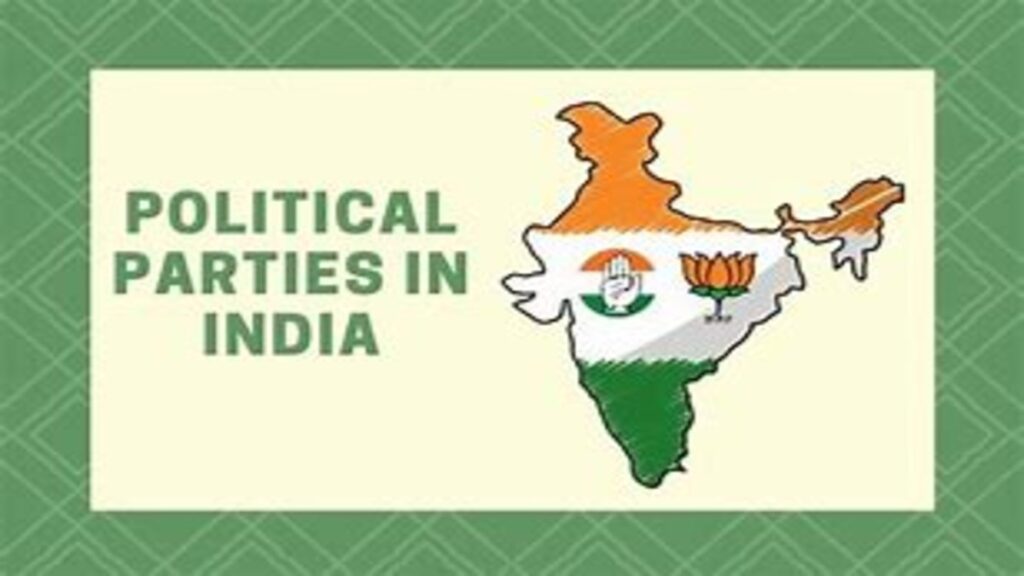India, the world’s largest democracy, is known for its diverse political landscape. With a vibrant mix of national, regional, and independent parties, Indian politics reflects the country’s cultural, linguistic, and ideological diversity. Political parties in India are crucial for shaping the nation’s policies, governance, and future. This article delves into the structure, significance, and roles of political parties in India.
Understanding Political Parties in India
A political party is a group of individuals who come together to contest elections, gain political power, and implement their policies. In India, political parties are broadly classified into two categories: national parties and regional (or state) parties.
National Political Parties
National parties operate across multiple states, representing broad ideologies and issues. To gain recognition as a national party, they must meet certain criteria set by the Election Commission of India (ECI), such as securing a minimum percentage of votes in multiple states.
Key National Parties in India
- Indian National Congress (INC):
Founded in 1885, the Congress played a pivotal role in India’s independence movement. Today, it is a major center-left party advocating secularism and social welfare policies. - Bharatiya Janata Party (BJP):
The BJP is a right-wing party rooted in Hindu nationalism and economic reform. It has emerged as the dominant political force in recent years, leading the government since 2014. - Communist Party of India (CPI):
One of the oldest left-wing parties, the CPI promotes socialism, worker rights, and anti-capitalist policies. - Communist Party of India (Marxist) (CPI-M):
An offshoot of CPI, the CPI-M has a stronger leftist ideology, focusing on land reforms, labor rights, and equality. - Bahujan Samaj Party (BSP):
Founded to represent Dalits and marginalized communities, the BSP advocates for social justice and equality. - Nationalist Congress Party (NCP):
A splinter group of the Congress, the NCP focuses on democracy, secularism, and federalism. - All India Trinamool Congress (AITC):
Initially a regional party from West Bengal, the AITC gained national party status due to its growing influence in other states.
Regional Political Parties
Regional parties play a crucial role in representing state-specific issues and cultural identities. They often influence coalition governments at the national level.
Notable Regional Parties
- Dravida Munnetra Kazhagam (DMK):
A dominant force in Tamil Nadu, the DMK advocates for social justice and state autonomy. - Shiv Sena (now split into factions):
Based in Maharashtra, Shiv Sena historically promotes regional pride and nationalism. - Aam Aadmi Party (AAP):
Emerging from the anti-corruption movement, the AAP governs Delhi and focuses on clean governance and public services. - Samajwadi Party (SP):
Primarily based in Uttar Pradesh, the SP emphasizes social justice and welfare for backward classes. - Telangana Rashtra Samithi (TRS):
Formed to fight for Telangana’s statehood, the TRS focuses on regional development and governance.
The Role of Political Parties in Indian Democracy
- Representation of Interests:
Political parties act as a bridge between the government and the people, representing diverse interests and demands. - Policy Formulation:
Parties outline their ideologies and vision in manifestos, influencing policymaking and governance. - Election Contests:
Parties provide candidates for elections, ensuring a competitive democratic process. - Accountability:
Opposition parties play a critical role in holding the government accountable for its policies and actions. - Promoting Social Change:
Parties often drive social reforms and address pressing issues like inequality, education, and healthcare.
Conclusion
Political parties are the backbone of India’s democracy, ensuring representation and accountability in governance. While challenges like corruption and identity-based politics persist, the active participation of citizens and reforms in the electoral process can strengthen the system. As India progresses, its political parties must strive to balance regional aspirations with national goals, paving the way for inclusive development and unity.
FAQs
1. How many national political parties are there in India?
As of now, there are eight recognized national parties, including the BJP, Congress, and CPI-M.
2. What is the difference between a national and a regional party?
A national party operates across multiple states, while a regional party primarily focuses on state-specific issues.
3. Why are regional parties important in India?
Regional parties represent local interests and often influence national policies through coalition governments.
4. What role do political parties play in elections?
Parties select candidates, create manifestos, and campaign to win elections and form governments.
5. How are political parties regulated in India?
The Election Commission of India oversees the registration and regulation of political parties.


